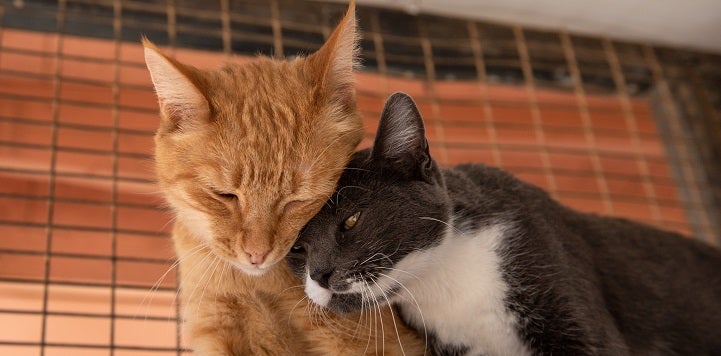
Intake & Community Services
Learn how updating your intake procedures and working with your community can save more lives, keep pets with their families, and improve the relationship with your community members.
![]() ONLINE COURSES
ONLINE COURSES
- Community-Supported Sheltering- Community-supported sheltering inspires and empowers the public to be involved with and support all aspects of animal welfare within the community, at the highest level of engagement possible. In practice, it’s the intersection between animal shelters, the community, and government to mutually support and leverage each other's resources to protect and serve the most vulnerable pets and their people in a community.
- Managed Intake and Admissions- Managed intake means controlling the hours when a shelter accepts animals from the public; this allows time for positive engagement with the people dropping off their pet. Waiting until assigned times gives people an opportunity to reconsider their decision. It also gives shelter staff a chance to offer resources for keeping the pet in the home, as well as to emphasize surrender as a last resort. Managed intake ultimately reduces the number of animals surrendered, makes the job of shelter workers more manageable, provides better community service and improves the flow of intake at the shelter.
![]() PLAYBOOKS
PLAYBOOKS
- Animal Flow- The guiding principle in animal sheltering is providing for the welfare of the animals housed within the shelter. In many shelters, balancing animal welfare science and physical space limitations can present significant lifesaving challenges. As proven lifesaving strategies and shelter medicine continue to evolve, so should shelters’ procedures, programs and protocols in pursuit of providing humane care for the animals. The term “animal flow” refers to the pathway options available to each animal from shelter intake to outcome. By design, shelters were never meant to house animals for the long term, and the moment an animal enters a shelter, the goal is to move him/her through that sheltering system toward a live outcome as soon as possible.
- Feline Housing and Enrichment Training Playbook- In almost every shelter across the country, cats make up the majority of annual animal intake. Unfortunately, they also comprise the majority of animals who lose their lives in shelters. Here, we discuss cats who are kept in your care for a short period of time (while waiting to be returned to the field) and those whose stay will be longer (while awaiting adoption or return to their owner). This playbook is designed to show the critical need to include a formal feline enrichment and housing program in your shelter’s daily operations and to provide resources on how to get started immediately.
- Humane Animal Control Manual- In the Humane Animal Control manual, you will find a road map for progressive, community-based animal care and control. Best Friends Animal Society has assembled a collection of descriptions of our country’s most successful lifesaving programs, written by those who helped make them possible. Whether you’re a municipal employee new to this field or a seasoned veteran, we hope that this publication will empower you and your agency to expand the level of service you bring to the people and animals in your community.
- Managed Intake or Admissions- This guide is designed to provide an overview of managed intake and help you implement a managed intake program at your agency. A common concern and misconception about managed intake is that scheduling non-urgent intakes will reduce services to the community and pets will be abandoned elsewhere. Agencies all over the country, in varying regional and demographic locations, have successfully implemented managed intake and disproven these misconceptions. Utilizing their experiences, standard operating procedures, and best practices, the following information will help you create your own lifesaving protocol for this instrumental program.
- People, Pets, and Policies: Towards Community Supported Animal Sheltering- Together with IMLA (International Municipal Lawyers Association), we have created the following comprehensive guide to provide municipalities with programs and policies that encourage the humane treatment of animals. The chapters included in the manual address topics such as pet inclusive public housing, empowering animal field officers, integrating animal services and municipal departments, managing feral cat populations, foster care, adoption services, volunteering at animal shelters, public and private partnerships, and breed-neutral policies and laws.
You can find additional information on intake and community services here.